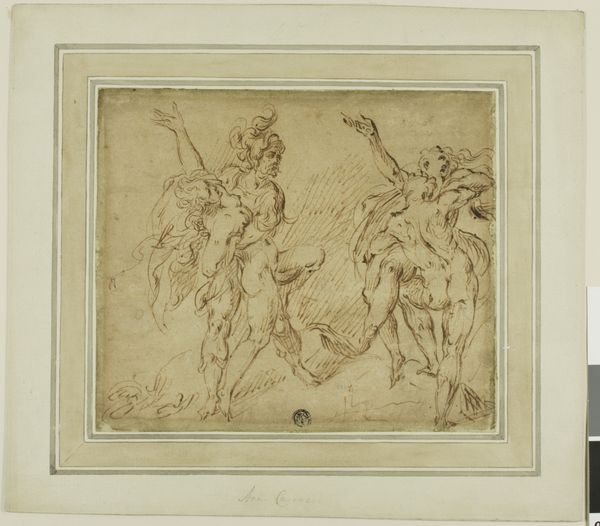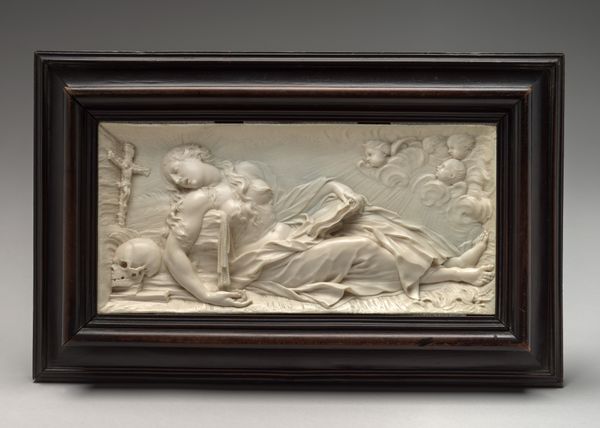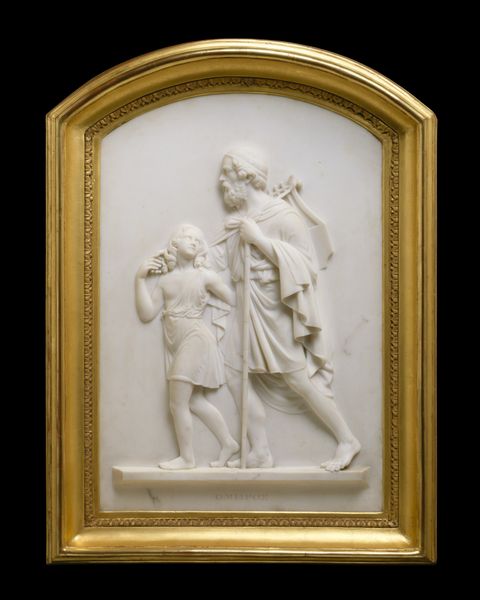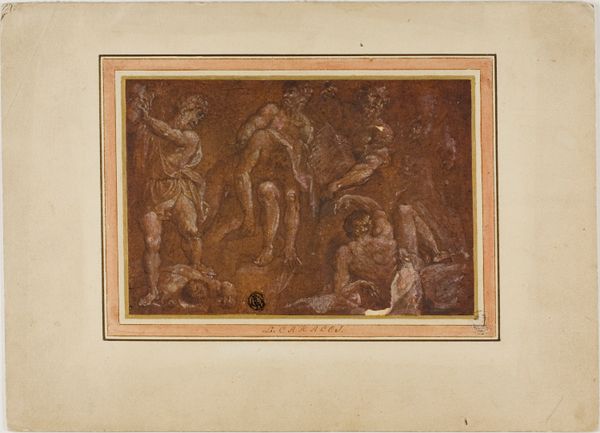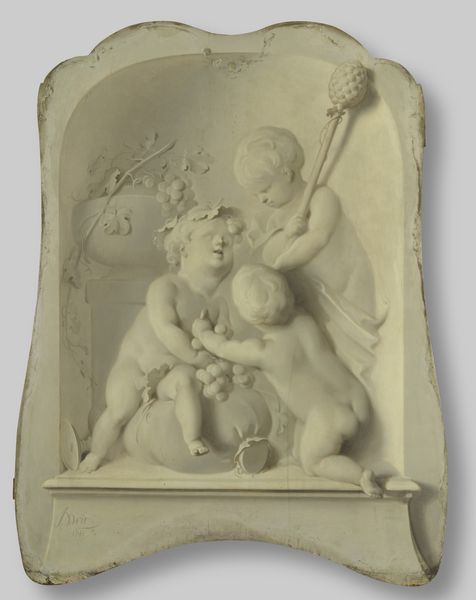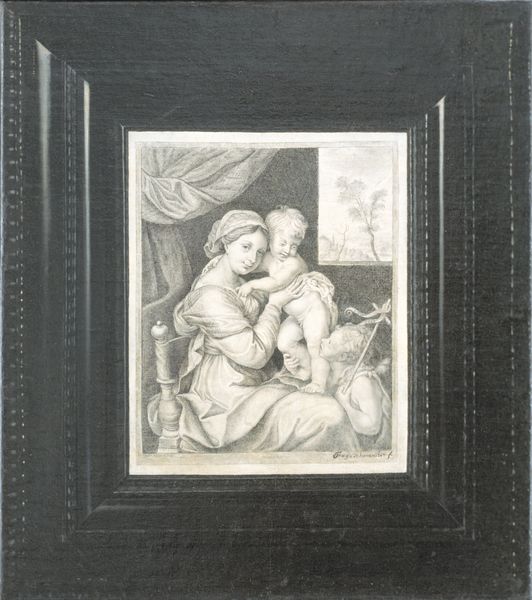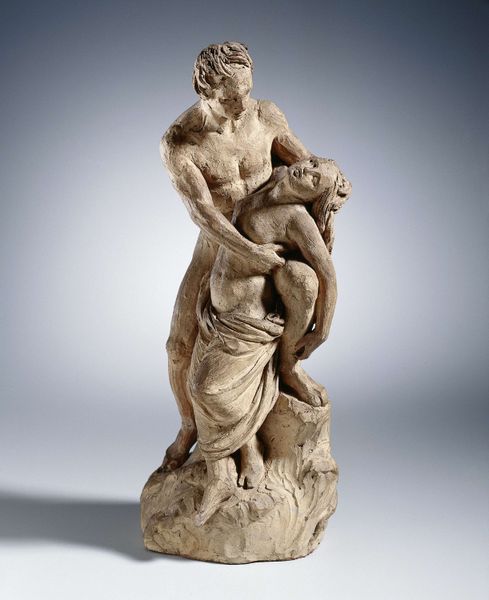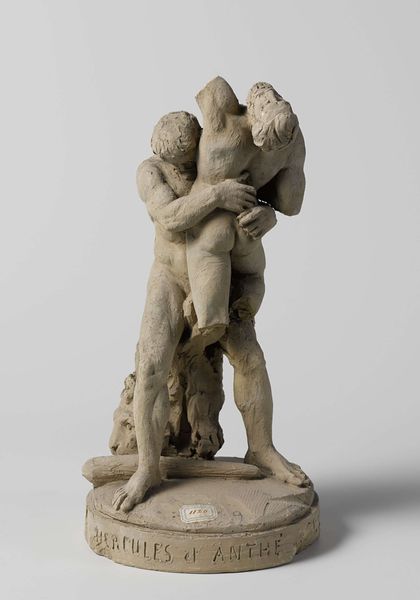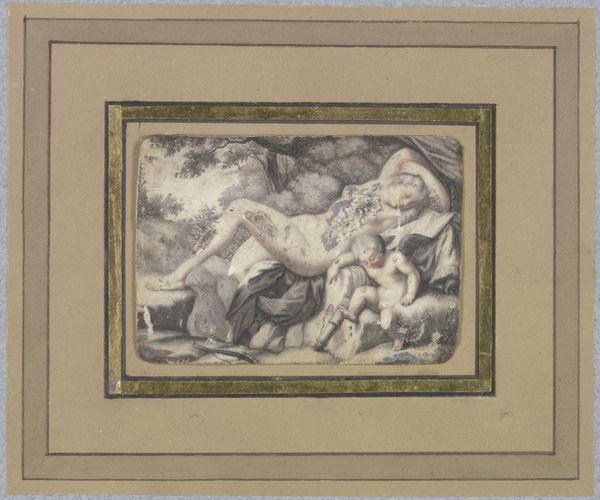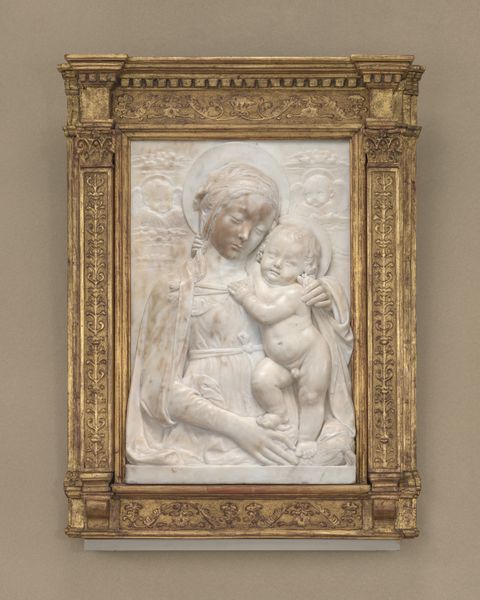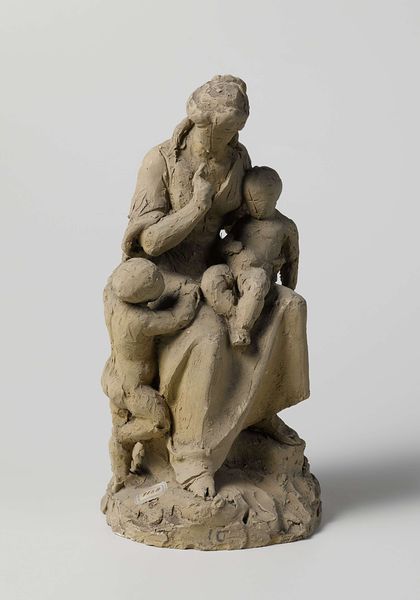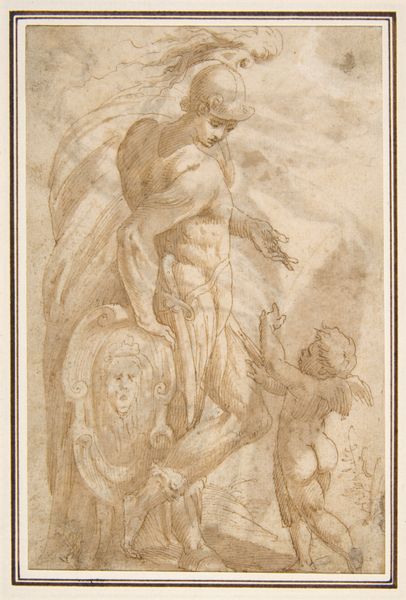
relief, sculpture, marble
#
narrative-art
#
baroque
#
sculpture
#
relief
#
classical-realism
#
figuration
#
sculpture
#
history-painting
#
marble
Dimensions: height 47.5 cm, width 37 cm
Copyright: Rijks Museum: Open Domain
Curator: This marble relief, crafted around 1660, is titled "Aeneas, Anchises and Ascanius," and is attributed to Abraham Vinckenbrinck. It depicts a pivotal scene from Virgil's Aeneid. Editor: Wow. It’s strangely unsettling, isn't it? All this smooth, almost ghostly, whiteness. The muscular figure carrying an old man... and the kid holding what looks like a tiny torch. A sense of urgent escape mixed with classical ideals… Powerful stuff. Curator: The pallor certainly contributes to a mood of gravitas. Vinckenbrinck is portraying Aeneas fleeing burning Troy with his father, Anchises, and his son, Ascanius. The figures are not simply portraits; they are symbols representing piety, duty, and the future of Rome. Editor: Symbols indeed. It almost feels like a family trauma frozen in time. Father clinging to son, son focused on forward momentum, a legacy clutched tight in a child’s grasp. I'm struck by the way the figures overlap and how this heightens the emotion. Curator: That overlap, the intergenerational connection, is central to the story's meaning. Anchises carries the household gods, the Penates, ensuring the continuity of their lineage and traditions. And Ascanius… well, he will eventually found Alba Longa, one of the precursor cities to Rome. Editor: So much narrative packed into a single scene! I am drawn to the little torch. In some ways, it is more important than the old man. Fire represents not only destruction, but the potential to ignite something new. Curator: Precisely! The flame speaks to renewal after devastation. This particular visual representation of the scene also leans into classical idealism, reflecting Baroque interest in antiquity’s virtues of courage and filial devotion, as a guiding beacon in times of turmoil. Editor: It’s an artwork to ponder for a while, with each viewing bringing you something new. The artist is saying something not only about heritage, but sacrifice, resilience, hope… it still speaks loudly to us centuries later. Curator: Indeed. And on that poignant note, we conclude our exploration of Vinckenbrinck’s fascinating relief. It exemplifies how the echoes of the past continue to reverberate through artistic expression.
Comments
rijksmuseum about 2 years ago
⋮
The monogram A.V.F. on this relief has yet to be identified. The style of the piece, however, points to an artist strongly influenced by Artus Quellinus. The depiction is derived from Raphael’s famous fresco in the Vatican depicting Aeneas rescuing his young son Ascanius and his aged father, Anchises, from the city of Troy, which had been captured by the Greeks.
Join the conversation
Join millions of artists and users on Artera today and experience the ultimate creative platform.

